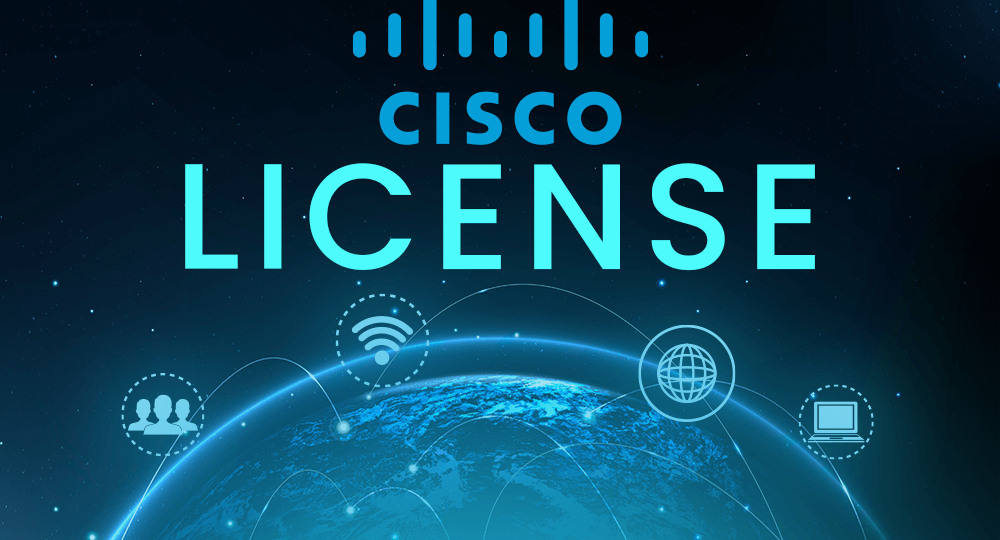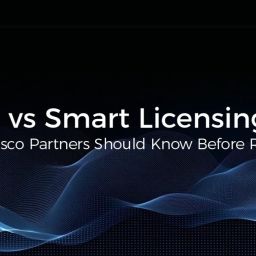
In the rapidly evolving landscape of enterprise networking, understanding licensing models remains crucial for technology partners and resellers. While Cisco has transitioned to Smart Licensing for many of its products, Product Authorization Key (PAK) licenses continue to play a vital role in legacy systems and specific deployment scenarios. For partners across West Africa, particularly those operating in Lagos, Abuja, Port Harcourt, and Ghana, mastering PAK license management can significantly impact client satisfaction and operational efficiency.
Recommended reading: How to Become a Cisco Partner Through TD Africa in 2025
What Is a Cisco PAK License?
A Cisco Product Authorization Key (PAK) represents the traditional licensing model that governed Cisco software and feature activations before the introduction of Smart Licensing. Think of a PAK as a digital key that unlocks specific software features or capabilities on Cisco devices. Each PAK contains a unique alphanumeric code that corresponds to particular software licenses, feature sets, or capacity increases for networking equipment.
The PAK system operates on a straightforward principle: when you purchase Cisco software or additional features, you receive a PAK code that must be converted into a license file. This license file is then installed on your Cisco device to activate the purchased functionality. Unlike Smart Licensing’s cloud-based approach, PAK licenses function independently without requiring continuous internet connectivity for validation.
For technology partners managing complex enterprise deployments, PAK licenses offer granular control over license allocation and usage. Each PAK can be tied to specific hardware through device fingerprinting, ensuring that licenses remain secure and properly allocated across your client’s infrastructure.
How Cisco PAK Licensing Works
The PAK licensing workflow follows a systematic approach that requires careful attention to detail. When a partner purchases Cisco software through authorized channels like TD Africa, they receive PAK codes either electronically or through physical documentation. These codes serve as proof of purchase and the gateway to license activation.
The activation process begins at Cisco’s License Registration Portal, where partners input their PAK codes along with device-specific information. The system validates the PAK against Cisco’s database and generates a license file tailored to the target device. This file contains encrypted license information that the device can interpret and apply to unlock the purchased features.
Device identification plays a crucial role in this process. Cisco devices generate unique identifiers, often called Universal Device Identifiers (UDI) or host IDs, which must be provided during license file generation. This ensures that each license file works only with its intended device, preventing unauthorized license transfers and maintaining compliance with Cisco’s licensing terms.
Once generated, the license file must be properly installed on the target device through the command-line interface or management applications. The installation process varies depending on the device type and software version, but generally involves copying the license file to the device’s flash memory and activating it through specific commands.
Key Steps in PAK Licensing Workflow:
- PAK Code Acquisition: Receive your unique PAK codes from authorized distributors like TD Africa, either electronically or through physical documentation, following your software purchase.
- Device Identification: Extract the Universal Device Identifier (UDI) or host ID from your target Cisco device using specific show commands to ensure proper license binding.
- License File Generation: Access Cisco’s License Registration Portal to input your PAK code and device information, triggering the creation of a device-specific license file.
- File Installation: Copy the generated license file to your device’s appropriate memory location and execute installation commands to activate the purchased features.
- Activation Verification: Confirm successful license installation using show commands to verify that all purchased features are properly activated and functioning on your device.
PAK vs Smart Licensing: Why Some Partners Still Use PAK
While Cisco’s Smart Licensing offers modern conveniences like centralized management and automatic compliance tracking, many partners continue to rely on PAK licensing for specific scenarios. Understanding when to use each approach helps partners make informed decisions for their clients’ environments.
Legacy system compatibility represents one of the primary reasons for continued PAK usage. Many enterprise networks contain older Cisco devices that predate Smart Licensing implementation or run software versions that don’t support the newer licensing model. For these environments, PAK licenses remain the only viable option for feature activation and software upgrades.
Air-gapped environments present another compelling use case for PAK licenses. Organizations with stringent security requirements often operate networks without internet connectivity, making Smart Licensing’s cloud-based validation impossible. PAK licenses function perfectly in these scenarios, providing full functionality without requiring external connectivity.
Some partners also prefer PAK licensing for its predictable license allocation model. Unlike Smart Licensing’s pooled approach, PAK licenses provide clear, device-specific license assignments that some organizations find easier to track and manage. This clarity can be particularly valuable for partners managing multiple client environments or those requiring detailed license auditing capabilities.
Why Partners Choose PAK Over Smart Licensing:
- Legacy System Compatibility: Many enterprise networks contain older Cisco devices that cannot support Smart Licensing, making PAK the only viable option for feature activation and compliance.
- Air-Gapped Security Requirements: Organizations with stringent security protocols often operate on disconnected networks where Smart Licensing’s cloud-based validation is impossible to implement.
- Predictable License Management: PAK licenses offer clear, device-specific assignments that simplify tracking and auditing compared to Smart Licensing’s flexible pooled allocation model.
- Compliance Control: Some organizations prefer the granular control that PAK licensing provides, allowing precise license allocation without concerns about pool sharing or automatic renewals.
- Reduced Internet Dependency: PAK licenses function completely offline after installation, eliminating concerns about internet connectivity affecting license validation or device functionality.
How TD Africa Supports PAK Fulfillment
TD Africa has established itself as a leading technology distributor across West Africa, with a particular strength in Cisco license management and fulfillment services. Our comprehensive PAK support infrastructure ensures that partners in Lagos, Abuja, Port Harcourt, and Ghana receive the technical expertise and logistical support necessary for successful license deployments.
Our license fulfillment process begins with expert consultation to ensure partners select the appropriate PAK licenses for their specific requirements. Our technical team works closely with partners to understand their deployment scenarios, device compatibility requirements, and timeline constraints. This collaborative approach helps prevent common pitfalls like ordering incompatible licenses or missing critical activation deadlines.
TD Africa maintains direct relationships with Cisco’s licensing systems, enabling us to provide rapid PAK code delivery and activation support. Our automated fulfillment processes ensure that partners receive their PAK codes quickly, often within hours of order confirmation. For urgent deployments, our regional offices in Lagos, Abuja, Port Harcourt, and Ghana can coordinate expedited processing to meet critical project timelines.
Beyond initial fulfillment, TD Africa provides ongoing technical support throughout the license activation process. Our certified engineers assist partners with device identification, license file generation, and installation procedures. This hands-on support proves invaluable for partners managing complex deployments or encountering technical challenges during activation.
Our inventory management systems provide real-time visibility into PAK license availability across different product lines and regions. This transparency helps partners plan their deployments more effectively and avoid delays caused by license availability issues. Additionally, our regional presence ensures that partners across West Africa receive consistent support regardless of their location.
Frequently Asked Questions
How do I activate a Cisco PAK license?
Activating a Cisco PAK license involves several systematic steps that require careful attention to detail. First, gather your PAK code and the Universal Device Identifier (UDI) from your target Cisco device. You can find the UDI by using the “show license UDI” command on most Cisco devices. Next, visit Cisco’s License Registration Portal and create an account if you don’t have one. Input your PAK code and device UDI information, then follow the prompts to generate your license file.
Once you receive the license file, typically delivered via email, you’ll need to install it on your Cisco device. The installation process varies by device type but generally involves copying the license file to the device’s flash memory and using commands like “license install” followed by the license file path. After installation, verify the license activation using commands such as “show license” or “show version” to confirm that your purchased features are now active.
Can PAK be converted to Smart Licensing?
Converting PAK licenses to Smart Licensing is possible in many cases, but the process depends on your specific Cisco products and software versions. Cisco provides migration tools and documentation for transitioning from traditional PAK licensing to Smart Licensing, particularly for newer device models that support both systems. However, this conversion typically requires careful planning and may involve software upgrades to ensure compatibility with Smart Licensing requirements.
The migration process generally involves registering your existing PAK licenses with Cisco’s Smart Software Manager, which creates equivalent entitlements in your Smart Licensing pool. This allows you to manage both legacy PAK-licensed devices and newer Smart Licensing-enabled equipment through a unified interface. Keep in mind that some older devices may never support Smart Licensing, requiring continued PAK management for those specific systems.
Do PAK licenses expire?
PAK licenses themselves don’t expire in the traditional sense, but they do have important time-sensitive elements that partners must understand. The PAK code has a redemption deadline, typically one year from the date of purchase, during which it must be converted to a license file. If you miss this deadline, the PAK code becomes invalid and cannot be used to generate license files. However, once successfully converted and installed, the resulting license file generally remains valid for the device’s lifetime.
Some PAK licenses include time-based features or evaluation periods that do expire after activation. These might include temporary feature evaluations or subscription-based services that require periodic renewal. Additionally, software maintenance contracts associated with PAK licenses may expire, affecting your ability to receive software updates or technical support, though the core license functionality typically remains active.
What happens if I lose a PAK code?
Losing a PAK code can create significant challenges, but recovery options exist depending on your purchase’s channel and documentation. If you purchased through TD Africa or another authorized reseller, contact your account manager immediately with your purchase order information, invoice details, and any available transaction references. Authorized distributors often maintain records of PAK codes and can assist with recovery or replacement processes.
For direct Cisco purchases, you’ll need to contact Cisco’s licensing support team with proof of purchase and account information. They can often retrieve PAK codes from their systems, though this process may take several days to complete. This situation highlights the importance of maintaining secure backups of all PAK codes and license files in multiple locations to prevent loss and ensure business continuity.
Where do I install the license file?
The license file installation location varies significantly depending on your Cisco device type and software version. For most modern Cisco devices, license files are installed in the device’s flash memory, typically in a dedicated licenses directory or the bootflash partition. The exact path might be something like “bootflash:/licenses/” or “flash:/licenses/”, depending on your device model and file system structure.
Some older devices or specific product lines may require license files in different locations, such as NVRAM or specific memory partitions. Always consult your device’s documentation or use commands like “dir” or “show file systems” to identify the appropriate installation location. After copying the license file to the correct location, use the device-specific license installation command to activate the license. The process typically involves commands like “license install [filename]” followed by license activation procedures that vary by device type and software version.
TD Africa provides comprehensive Cisco licensing support across West Africa, including PAK fulfillment, activation assistance, and ongoing technical support. Contact our teams in Lagos, Abuja, Port Harcourt, or Ghana to learn how we can streamline your Cisco license management processes and ensure successful deployments for your clients.


